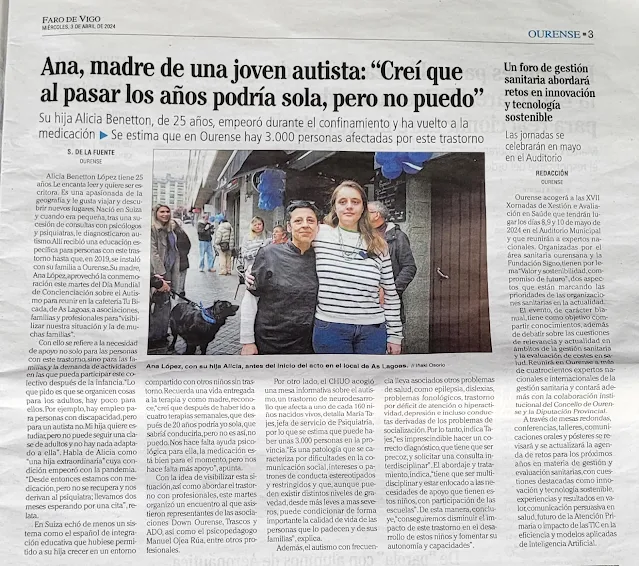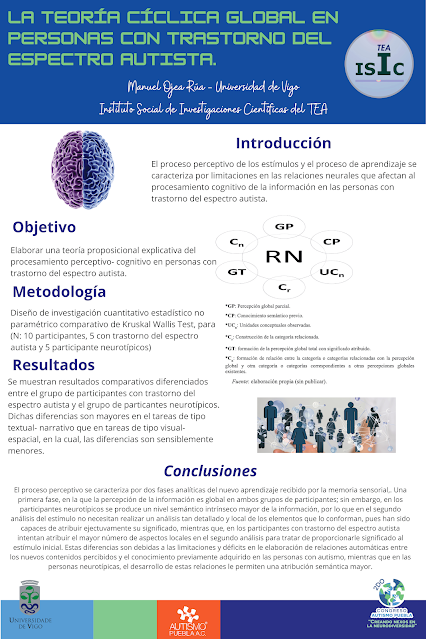Proceso perceptual de superación del trastorno del espectro autista o diagnóstico inicial erróneo
Por M. Ojea , agosto 2024
Capítulo de libro publicado en "Autismo. Uma abordagem multiprofesional", vol. 3(2) (pp. 29- 43). Guarujá, São Paulo, Brasil: Editora Científica Digital Ltda. ISBN: 978-65-5360-729-3. DOI: 10.37885/240817331
El Trastorno del Espectro Autista se caracteriza por la presencia de particularidades en las redes neurales de la transmisión flexible de la información, que afecta a los niveles perceptivo- cognitivos y socio- conductuales. Esta investigación constituye un Estudio de Caso Único longitudinal realizado a lo largo de 32 años, estructurado en cinco intervalos- fases evolutivas (0–4.5; 4.6–9: 9.1–12; 12.1–16.5; 16.6–32 años de edad), que confirma la importancia de la influencia de las redes neurales sobre las demás variables que engloban el grupo sintomático del trastorno. Los cambios sucesivos diferenciales a través de las cinco fases de análisis, en relación con las variables “perceptivo”, “social” y “conducta” del análisis, son altamente significativos, que han sido hallados mediante la prueba comparativa de Friedam, mientras que la variable “nodos” se mantiene constante, con un nivel 0 de dificultad. Asimismo, como muestra el análisis de correlación de Pearson, las variables evolutivas del desarrollo se relacionan mutuamente de forma significativa para un nivel de .01 de significación estadística. Las conclusiones permiten confirmar que la variable relativa a la elaboración de relaciones nodales “nodos” influye de manera decisiva en la mejora evolutiva del resto de las variables analizadas, modificando progresivamente el grupo sintomático del trastorno, por lo que se señala que las variables neuropsicológicas del procesamiento neuropsicológico de la información, especialmente, aquellas variables relacionadas con la capacidad de elaboración de redes relacionales del procesamiento deben ser analizadas exhaustivamente de forma complementaria a los criterios socio- conductuales, recogidos en las clasificaciones actuales, para evitar posibles errores iniciales en las conclusiones diagnósticas.





















.heic)
.heic)
.heic)
.heic)
.heic)







